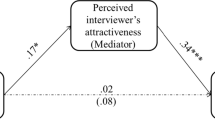Abstract
There is a considerable body of literature on infidelity within romantic relationships. However, there is a gap in the scientific literature on factors influencing the likelihood of uninvolved individuals exposing sexual infidelity. Therefore, we devised an exploratory study examining a wide range of potentially relevant factors. Based in part on evolutionary theory, we anticipated nine potential domains or types of influences on the likelihoods of exposing or protecting cheaters, including kinship, strong social alliances, financial support, previous relationship behaviors (including infidelity and abuse), potential relationship transitions, stronger sexual and emotional aspects of the extra-pair relationship, and disease risk. The pattern of results supported these predictions (N = 159 men, 328 women). In addition, there appeared to be a small positive bias for participants to report infidelity when provided with any additional information about the situation. Overall, this study contributes a broad initial description of factors influencing the predicted likelihood of exposing sexual infidelity and encourages further studies in this area.
Similar content being viewed by others
References
Buss, D. M. (1995). Evolutionary psychology: A new paradigm for psychological science. Psychological Inquiry, 6, 1–30.
Buss, D. M., Larsen, R., Westen, D., & Semmelroth, J. (1992). Sex differences in jealousy: Evolution, physiology, and psychology. Psychological Science, 3, 251–255.
Buss, D. M., Shackelford, T. K., Kirkpatrick, L. A., Choe, J. C., Lim, H. K., Hasegawa, M., et al. (1999). Jealousy and the nature of beliefs about infidelity: Tests of competing hypotheses about sex differences in the United States, Korea, and Japan. Personal Relationships, 6, 125–150.
Buunk, B. (1980). Extramarital sex in the Netherlands. Alternative Lifestyles, 3, 11–39.
Cano, A., & O’Leary, K. D. (2000). Infidelity and separations precipitate major depressive episodes and symptoms of nonspecific depression and anxiety. Journal of Consulting and Clinical Psychology, 68, 774–781.
Cohen, J. (1988). Statistical power analysis for the behavioral sciences (2nd ed.). New York: Academic Press.
Daly, M., Wilson, M., & Weghorst, S. (1982). Male sexual jealousy. Ethology & Sociobiology, 3, 311–327.
Essock-Vitale, S., & McGuire, M. (1985). Women’s lives viewed from an evolutionary perspective: II. Patterns of helping. Ethology and Sociobiology, 6, 155–173.
Fenigstein, A., & Peltz, R. (2002). Distress over the infidelity of a child’s spouse: A crucial test of evolutionary and socialization hypotheses. Personal Relationships, 9, 301–312.
Glass, S. P., & Wright, T. L. (1985). Sex differences in types of extramarital involvement and marital dissatisfaction. Sex Roles, 12, 1101–1119.
Green, J. D., Burnette, J. L., & Davis, J. L. (2008). Third-party forgiveness: (Not) forgiving your close other’s betrayer. Personality and Social Psychology Bulletin, 34, 407–418.
Hall, J. H., & Fincham, F. D. (2006). Relationship dissolution following infidelity: The roles of attributions and forgiveness. Journal of Social and Clinical Psychology, 25, 508–522.
Hamilton, W. (1964). The evolution of altruistic behavior. The American Naturalist, 97, 354–356.
Hupka, R. B., Buunk, B., Falus, G., Fulgosi, A., Ortega, E., Swain, R., & Tarabrina, N. (1985). Romantic jealousy and romantic envy: A seven-nation study. Journal of Cross-Cultural Psychology, 16, 423–446.
Jankowiak, W., Nell, M., & Buckmaster, A. (2002). Managing infidelity: A cross-cultural perspective. Ethnology, 41, 85–101.
Johnson, R. E. (1970). Extramarital sexual intercourse: A methodological note. Journal of Marriage and the Family, 32, 249–255.
Kruger, D. J., Fisher, M. L., Edelstein, R. S., Chopik, W. J., Fitzgerald, C., & Strout, S. L. (2013). Was that cheating? Perceptions vary by sex, attachment anxiety, and behavior. Evolutionary Psychology, 11, 159–171.
Lawson, A. (1988). Adultery. New York: Basic Books.
Lenth, R. V. (2009). Java applets for power and sample size [Computer software] Retrieved December 24, 2013, from http://www.stat.uiowa.edu/~rlenth/Power.
Mark, K. P., Janssen, E., & Milhausen, R. R. (2011). Infidelity in heterosexual couples: Demographic, interpersonal, and personality-related predictors of extradyadic sex. Archives of Sexual Behavior, 40, 971–982.
Michalski, R. L., Shackelford, T. K., & Salmon, C. A. (2007). Upset in response to a sibling’s partner’s infidelities. Human Nature, 18, 74–84.
Monto, M., & Carey, A. (2013). A new standard of sexual behavior? Are claims associated with the “hookup culture” supported by nationally representative data? Presented at the meeting of the American Sociological Association, New York.
Sagarin, B. J., Martina, A. L., Coutinho, S. A., Edlund, J. E., Patel, L., Skowronski, J. J., & Zengel, B. (2012). Sex differences in jealousy: A meta-analytic examination. Evolution and Human Behavior, 33, 595–614.
Shackelford, T. K., & Buss, D. M. (1997). Cues to infidelity. Personality and Social Psychology Bulletin, 23, 1034–1045.
Shackelford, T. K., & Goetz, A. T. (2007). Adaptation to sperm competition in humans. Current Directions in Psychological Science, 16, 47–50.
Shackelford, T. K., Michalski, R. L., & Schmitt, D. P. (2004). Upset in response to a child’s partner’s infidelities. European Journal of Social Psychology, 34, 489–497.
Shavit, Y., Fischer, C. S., & Koresh, Y. (1994). Kin and nonkin under collective threat: Israeli networks during the gulf war. Social Forces, 72, 1197–1215.
Smith, T. W., Marsden, P., Hout, M., & Kim, J. (2013). General social surveys, 1972-2012. Chicago, IL: National Opinion Research Center.
Spanier, G. B., & Margolis, R. L. (1983). Marital separation and extramarital sexual behavior. Journal of Sex Research, 19, 23–48.
Thornhill, R., & Thornhill, N. W. (1992). The evolutionary psychology of men’s coercive sexuality. Behavioral and Brain Sciences, 15, 363–421.
Toothaker, L. E. (1993). Multiple comparison procedures. Newbury Park, CA: Sage.
Trivers, R. L. (1971). The evolution of reciprocal altruism. Quarterly Review of Biology, 46, 35–57.
Weis, D. L., & Slosnerick, M. (1981). Attitudes toward sexual and nonsexual extramarital involvements among a sample of college students. Journal of Marriage and the Family, 43, 349–358.
Wiederman, M. W. (1997). Extramarital sex: Prevalence and correlates in a national survey. Journal of Sex Research, 34, 167–174.
Author information
Authors and Affiliations
Corresponding author
Rights and permissions
About this article
Cite this article
Kruger, D.J., Fisher, M.L. & Fitzgerald, C.J. Factors Influencing the Intended Likelihood of Exposing Sexual Infidelity. Arch Sex Behav 44, 1697–1704 (2015). https://doi.org/10.1007/s10508-014-0469-x
Received:
Revised:
Accepted:
Published:
Issue Date:
DOI: https://doi.org/10.1007/s10508-014-0469-x



